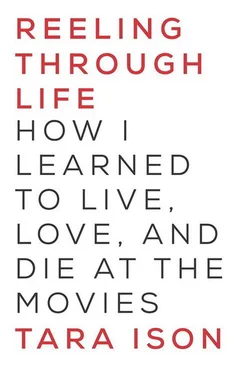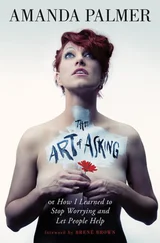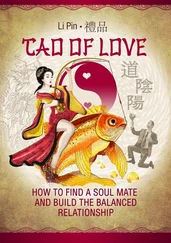
My brave spirit!
Who was so firm, so constant, that this coil
Would not infect his reason?
— Prospero to Ariel, from Shakespeare’s The Tempest —and popping up on-screen in An Angel at My Table
I didn’t want to see An Angel at My Table in 1991. 5I’d heard it was about a woman going crazy, and I was done with women-going-crazy movies. I’d learned those lessons. But no, I’m told, it’s really about a New Zealand writer from the 1930s and ’40s, so I go. And it is all about a writer, at first; Janet Frame is a painfully introverted and awkward young woman, with rotting teeth and Little Orphan Annie hair, who wins people over with her brilliantly obtuse poems and short fiction, and this long initial writer part is lovely to aspiring-writer me. But then her professor compares her, ominously, to Virginia Woolf and van Gogh. By this he means he thinks she’s crazy as well as brilliant, and suddenly strange men show up to convince her she needs to go someplace for a nice rest. Janet agrees, but when she sees PSYCHIATRIC WARD on the door ( Run , I want to yell), she starts to question what is going on — she doesn’t belong here, does she? It’s a good question: There’s been no shrieking, no belligerence, no laziness. No erratic behavior, no manic fits. There isn’t even anyone looking to punish her for something or wanting her out of the way. She’s just a little shy, that’s all, has some anxiety, sure. But she’s diagnosed with schizophrenia. To me this seems almost worse than someone consciously seeking control or revenge — it’s an arbitrary label, too casually and unaccountably slapped on, an almost clerical error of judgment.
However, Janet seems pleased by the diagnosis, as if, finally, she has an identity. Until, sure enough, we cut to the shrieks. An assembly line of crazy women are getting communal electroshock; Janet, watching and listening, is terrified. “Close your eyes,” she’s told, her temples swabbed, the rolled towel shoved in her mouth, the dial turned. She screams and jerks. And we hear her beautiful, resonant voice:
JANET
For the next eight years I received more than two hundred applications of electroshock treatment, each one equivalent in fear to an execution.
Eight years! Two hundred shocks! And after all this, her doctor decides on a new operation for her, and we all know what that means. Janet’s bewildered, clueless mother has agreed. She has signed the papers. Those damn papers. But there’s sudden news that Janet has won some huge book award; another doctor takes another look at her and sends her home. She’s perfectly normal! All is well! Go back to your happy life, you’re fine! I hear in my mind.
Janet tries to go back to her life; she tries to create a life. She publishes another book, she travels to Europe, she finally gets laid. But when she naïvely offers up her psychiatric history at a job interview, she realizes she’s still dragging this thing around, the confused conviction there must be something wrong with her. And she doesn’t know how to kick it loose:
JANET
In fear and despair at my life, I needed answers to the questions I still asked myself about my history. I knew that talk of suicide must always be taken seriously. Such talk came readily to me as a shortcut to ensure action.
And she walks back into a psychiatric hospital. Voluntarily . This I find shocking. I can’t understand how she can offer herself up for the rotisserie like that. Is this woman stupid or brave? Or— is she really crazy?
JANET
Finally, it was concluded that I had never suffered from schizophrenia. At first, the truth seemed more terrifying than the lie — how could I now ask for help when there was nothing wrong with me?
A doctor tells her any problems she’s having now are due to her prior hospitalization. She really is fine. She can be shy if she wants, feel as awkward as she likes. And she does go on to write more books, win more awards, live a happy life. Crazy or normal, I realize, this woman is amazing; she so strong, so constant.
But I am not. A year later, I am back in a sink on my couch, mired in sobbing and hiding from family and friends, and this time I can’t blame it on the dope-you-up antiseizure pills. One morning I realize I’ve lost four or five months of time. It’s gone astray. I think maybe I should call someone. I remember Therapist Steve and his unthreatening macramé plants, but who knows where he is. I borrow a friend’s therapist, make an appointment; Therapist Cathy is pretty and young and very tiny, wholly un-Ratched-like, wearing a floral-print dress. She seems harmless, uninvested in me, agenda-free, so I sit on her couch for fifty minutes and choke and bawl about how there is nothing wrong . She sends me immediately to a psychiatrist, a clinical, expressionless woman who lectures me for twenty minutes about serotonin levels, runs through a checklist of factors indicating clinical depression, and gives me a prescription for antidepressants. I can smell the thin wet-paper smell of Dixie cups, and I fear this is only the beginning. I hear an iron door clang, I could swear I see a gleam in her eye, and I run back to Therapist Cathy: Can we just try this, first, the two of us, in your safe office with the plush carpeting and the pictures of pretty gardens on the walls? Before the drugs, before the brain chemistry issue and doctors and nurses and the word clinical , please? She agrees, reluctantly, but lets the word hospital hang in the room: Seventy-two hours, she tells me; if she decides at any time that I’m a real danger to myself, she can have me put in a hospital for seventy-two hours, they can have me for seventy-two hours.
She’s telling me this, and I’m thinking about Planet of the Apes . 6I remember lost-in-space traveler Taylor (Charlton Heston), now captured and strapped to a veterinarian’s table, rendered speechless from a throat injury, at the mercy of hostile talking gorillas. I remember kind chimpanzee Zira asking orangutan-in-charge Dr. Zaius if she might continue working with her favorite human, Taylor, and Dr. Zaius replies, “Experimental brain surgery on these creatures is one thing, and I’m all in favor of it,” while glaring at Taylor, who is trapped in a cage, a leather choke restraint around his neck. Later Taylor, trying to prove his advanced cerebral functioning is no freak accident, finds one of his fellow astronauts, Landon, in a crowd — Landon turns to show us his slack jaw and lifeless gaze, and we see a tidily shaven patch on the side of his head, and a horseshoe of a scar, McMurphy-style, and Taylor screams:
TAYLOR
They cut him. . you cut up his brain, you bloody baboon!. . you cut out his memory, you took his identity!
And Taylor isn’t even suspected of being crazy, but he’s a problem, and the same thing is in store for him, Dr. Zaius warns, the “experimental surgery on the speech centers, on the brain. Eventually a kind of living death.”
Meanwhile Therapist Cathy is telling me, Yes, we can try this, but she doesn’t let me leave until we make a pact: No dangerous behaviors without calling her, first. Agreed, and we plan for me to see her three times a week. I do not mention that I have already been researching suicide — A+, homework-doing student that I am — that I already own a copy of Final Exit , already have purchased a pack of old-fashioned razor blades.
But I don’t consider buying the razor blades a dangerous behavior. I just need them to make those tiny little practice slices in my thighs and forearms, just a warm-up, just to see if I can feel anything, and to see if I’ll be able to do it when the time comes. I rehearse and rehearse: Mere kitten scratches. The real time comes, I decide, a month or so later during an inexplicably sobbing-at-two-in-the-morning fit of hysteria; I pick up a fresh blade, try, can’t do it. Can’t do it for real. So I now have to confront my inability to make a deep and assertive-enough slice to offer escape, and that inadequacy makes me paroxysmic. I can’t do anything right. What a fake I am. What a wimp, a fucking fraud. Maybe a gun. Maybe poison, jumping off a building, something honest and true, something that once committed to, I can’t back out of. Okay, I figure, I should call Therapist Cathy, that’s the rule we agreed on, and I don’t break rules or agreements because I am such a fucking Good Girl.
Читать дальше













